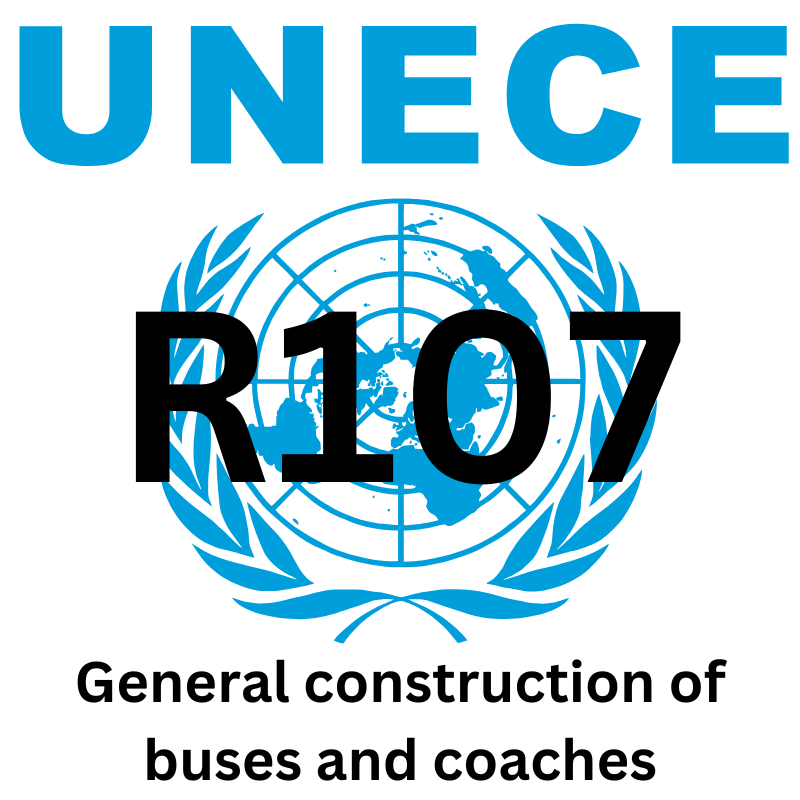Guide To: UNECE R107 - General construction of buses and coaches
23 October 2024

Guide To: UNECE R107 - General construction of buses and coaches
UN ECE Regulation No. 107 establishes the uniform provisions for the approval of category M2 and M3 vehicles with regard to their general construction. M2 and M3 vehicles include buses and coaches, with M2 covering smaller vehicles carrying fewer than 22 passengers, and M3 covering larger buses. This regulation is crucial for ensuring the safety, accessibility, and functional performance of these passenger vehicles.
Scope of the Regulation
UN ECE R107 applies to:
- Single-deck, double-deck, rigid, and articulated vehicles in categories M2 (for vehicles with a capacity not exceeding 22 passengers) and M3 (for vehicles exceeding 22 passengers).
- Vehicles used in public transport, buses, and coaches.
Key Features of UN ECE R107
Vehicle Classification:
- Vehicles are classified into Classes I, II, and III based on their intended use:
- Class I: Vehicles constructed for standing passengers.
- Class II: Vehicles primarily for seated passengers, with limited standing room.
- Class III: Vehicles exclusively for seated passengers.
Accessibility and Safety Provisions:
- The regulation mandates provisions to improve accessibility for passengers, including those with reduced mobility, such as wheelchair access. This includes space allocation for wheelchairs, safety signs, and priority seating.
- Emergency exits are a critical part of the design. R107 includes stringent requirements for the number, placement, and accessibility of emergency doors, windows, and escape hatches, ensuring that passengers can safely evacuate the vehicle in emergencies.
Fire Suppression Systems:
- For vehicles equipped with fire suppression systems, R107 outlines the approval requirements for these systems, both as components and when installed in specific engine compartments. This includes testing and verifying the performance of extinguishing agents and discharge points to ensure safety in the event of a fire.
Passenger Compartment and Gangway Design:
- Vehicles must have appropriately sized and designed gangways and passenger compartments to ensure free movement of passengers. The regulation specifies the dimensions and layout to prevent overcrowding and ensure ease of movement during regular operation or emergencies.
Technical Requirements for Special Categories:
- The regulation also covers double-deck and articulated vehicles, ensuring structural integrity and safety features tailored to these more complex vehicle types. For example, articulated vehicles must provide a safe means for passengers to move between sections.
- Trolleybuses, which use overhead electric wires for propulsion, are also addressed, with specific environmental and operational requirements.
Conclusion
UN ECE R107 provides a comprehensive framework for the approval of M2 and M3 vehicles, ensuring that buses and coaches are designed to be safe, accessible, and reliable. With provisions for fire safety, accessibility for people with reduced mobility, and emergency evacuation, this regulation plays a critical role in enhancing the safety and functionality of public transport vehicles.